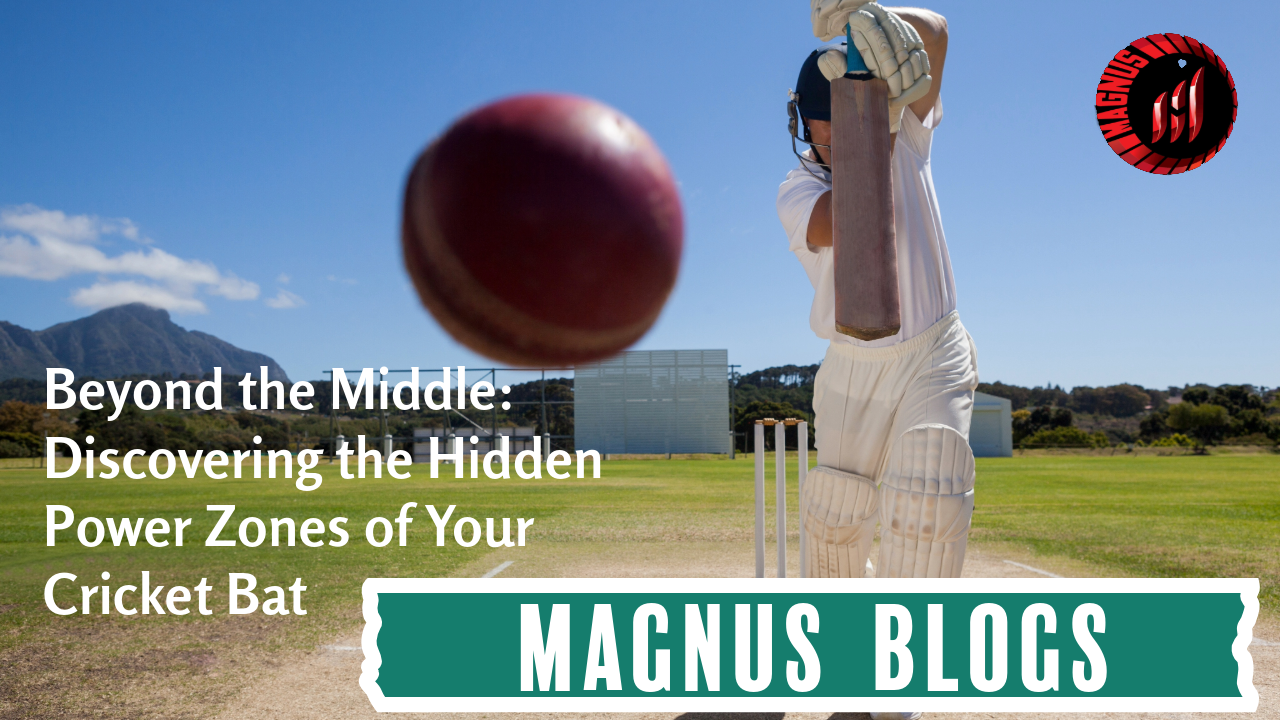In cricket, there’s nothing more satisfying than striking the ball right out of the sweet spot. The effortless connection, the sound, the power — it’s pure magic. But what if there’s more to the bat than just the traditional middle? Could there be hidden zones—subtle, quiet, yet powerful—that escape even a trained eye?
Welcome to the concept of “The Whisper Zone” — regions on your bat that aren't part of the textbook sweet spot but occasionally produce surprising results. These zones aren’t loud. They don’t always ping with resonance. But they respond — and sometimes, they work better than expected.

What is the Sweet Spot, Really?
Traditionally, the sweet spot is the area near the center of the bat's blade—typically around 6 to 12 inches from the toe—where vibrations are minimal and rebound is maximum. When the ball hits this spot:
-
Power transfer is efficient
-
Shock is minimized
-
The bat “feels” just right
This is what bat makers optimize for — shaping, pressing, and balancing the bat so that this area performs perfectly.
So, What’s a Whisper Zone?
A whisper zone is an unconventional area on the bat face — outside the traditional middle — that delivers unexpectedly good performance. These zones may:
-
Sit slightly higher or lower on the blade
-
Exist closer to the edges
-
Be affected by grain variation or wood density
-
Be unique to each bat
Players often describe these moments as "off-center, but it still flew." These aren’t mistakes. They’re the signature of something the eye can’t quite measure — a natural irregularity that works in your favor.
What Creates a Whisper Zone?
Every bat is made from natural willow, and no two pieces of wood are the same. This leads to:
1. Grain Density Variation
Some areas may be denser than others, leading to different energy transfer characteristics.
2. Pressing Differences
Manual pressing or inconsistencies in pressure during manufacturing can leave some regions more reactive.
3. Edge Tension
In some bats, the shoulders or lower edges seem to offer surprising pop, especially in fast-paced formats like T20.
4. Handle Vibration Feedback
How the handle and blade absorb and transfer shock can alter how “dead” or “alive” a zone feels.
Have Players Noticed This?
Absolutely — though not always consciously. Many seasoned players stick to one bat longer not because it looks new, but because it just feels right. Over time, they may discover:
-
Shots that work better off slightly higher or lower zones
-
Certain angles that yield more rebound despite not hitting the traditional middle
-
A unique connection that only that bat delivers
This isn't superstition — it’s familiarity with the bat’s personal rhythm.
Why Don’t We Hear About Whisper Zones?
Because they’re inconsistent and personal. What works for one bat might not for another. Manufacturers can’t market them. And most measuring tools are designed to highlight standard sweet spots. Whisper zones lie in that space between science and feel — too subtle to track, too powerful to ignore.
Can You Find Yours?
Yes — but it takes patience and awareness.
Here’s how:
-
Play with different zones deliberately — tap higher, lower, wider
-
Pay attention to feedback — what feels unexpectedly smooth or powerful
-
Experiment in nets — find your natural hitting comfort
-
Trust your instincts — if it feels good, explore it
Eventually, your bat may reveal its unique voice.
Cricket bat types, Cricket equipment in usa, Cricket equipment store, Cricket gloves, Cricket helmet, Cricket kit bags, Cricket retailers, Durable cricket gloves, English willow bats, Icc approved helmets., Kashmir willow cricket bat, Latest kashmir willow bat
